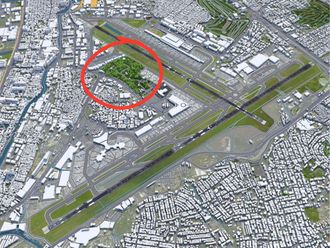The oil market never fails to see a reason for its volatility and in the movement of prices, sometimes against all expectations.
The latest unpredictable incident that moved the market is the wildfire that engulfed large swathes of Canadian boreal forests close to Fort McMurray in the heart of the Alberta oil sands territory. The fire started on May 1 in a region known for forest fires at this time of the year as a result of rising temperatures and the dry season.
But this time around the fire, reported to be the largest in Canadian history, spread in all directions and caused the shut down of many oilfields and pipeline facilities as a precautionary measure, which caused a reduction in Canadian production by 1.2 million barrels a day (mbd) according to the International Energy Agency.
On May 5, oil prices jumped 5 per cent, with Brent and WTI each rising by $2 (Dh7.34) a barrel at one point during trading. The market also moved on account of the violence in Libya and the prevention of loading at a major terminal. However, some analysts believe the fallout from the Canadian fire was being underestimated.
As is well known, Canadian exports are essentially destined for the US and considering the high oil stocks in the US, prices did not go higher. At the same time, reports of increasing Opec production may have tempered the market reaction. However, as the fire spread further, the situation became more serious and the market was moved by the hour according to the news from fire fighters.
Expensive to produce
Oil reserves in Canada rose from 48.1 billion barrels in 1994 and stayed around that until suddenly, in 1999, reserves were upgraded to 181.6 million barrels when Canada decided to add reserves of the oil sands to its portfolio. Production rose from 0.92 mbd in 1965 to 2.066 mbd in 1992 and to 4.29 mbd in 2014. The sharp rise in production came from expansion of the expensive-to-produce oil sands production, especially when prices appreciated from 2002 onwards.
Oil consumption in Canada in 2014 was 2.37-mbd and therefore its net oil exports are around 1.9-mbd. However, Canada exports around 3.5-mbd, essentially to the US and makes the difference by importing from the international market.
Due to the heavy and sour nature of Canadian crudes, US Midwestern refiners had to make adjustments to refine these crudes and, therefore, if the problem of the raging fires persist, these refiners will find it difficult to find replacements and US imports will increase.
The forest fires caused the destruction of more than 2,400 homes and buildings — 10 per cent of Fort McMurray — and the evacuation of 90,000 people. Oil sand companies may return gradually to production, but the process will be slow and will proceed only if safety allows and services are returned to the region and, most importantly, when evacuated operators and staff can return to work.
While Shell resumed partial operations, CNOOC’s Nexen warned customers it may not be able to fulfil supply contracts and issued a force majeure to become the fourth company to do so. BP, Phillips and Suncor warned clients that some supplies would be disrupted by the fires.
While immediate concern to supply began to fade, the situation remains uncertain as the fires are still raging and could change direction again. Officials hope to inform the residents in two weeks’ time when they may return to Fort McMurray.
No matter how temporary the fire and its oil market impact is, the environmental impact will be talked about for a long time to come. The fire involved an area of just over 2,000 square kilometres and damages may reach $9 billion.
Toxins
Contaminants of mercury, metals and hydrocarbons deposited on trees and soil are carried by the fire and smoke in addition to toxins from burning homes and structures. The ash is now home for these contaminants and rain may carry it to rivers and lakes and pose environmental challenges.
After this fire, environmentalists are expected to be more critical of Canada’s climate change policies and point to the massive carbon dioxide emissions caused by the energy requirement to produce what they call “garbage” crude oil. And they will insist that the intensity of the fire and its extent are a result of climate change.
The loss of 1.2 mbd production in addition to shortages from Nigeria and Libya would have caused much higher increases in oil prices if it weren’t for the high level of stocks and production increase in Iran and Iraq and the reports about planned increases in Saudi Arabia and Russia.
The market is still oversupplied ... but let us wait for the next surprise to come.
The writer is former head of the Energy Studies Department at the Opec Secretariat in Vienna.












